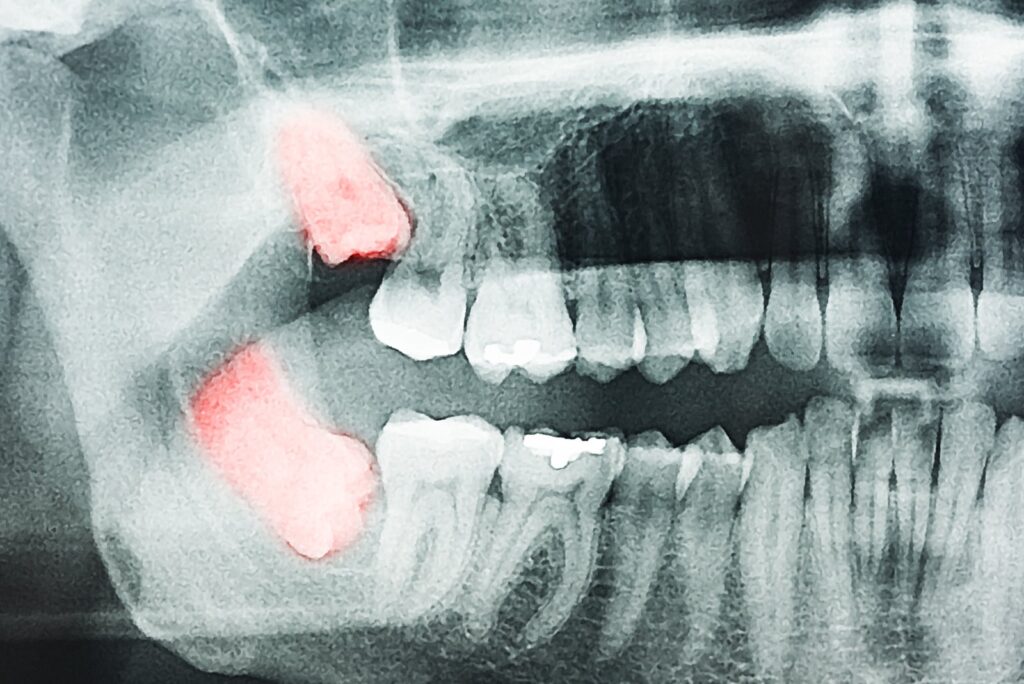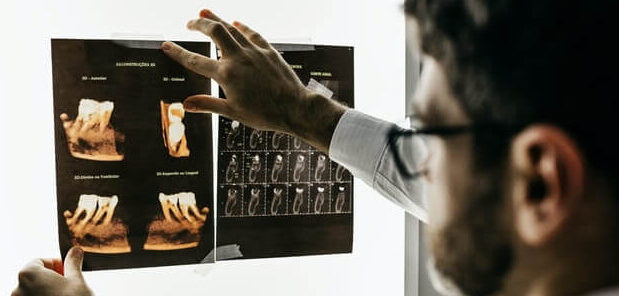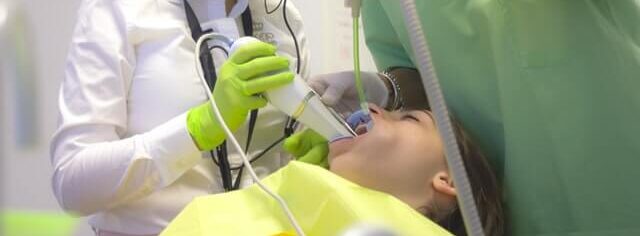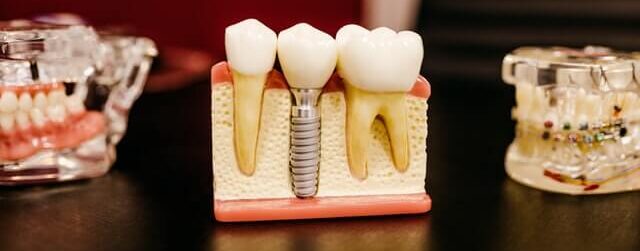The mouth has many different surfaces and structures that have different parts to each of them. X-rays allow dentists to see into the mouth and even partially inside a lot of structures in the mouth. Using dental x-ray’s also allows dentists to see under the gums, this is incredibly useful as issues like impacted teeth (growing in the wrong direction) are always a possibility.

What types of problems show up in dental x-rays?
There are lots of issues that can show up on a dental x-ray:
- Decay – Some decay might be hard to spot just looking at the mouth, an x-ray will make less-obvious decay much more noticeable.
- Impaction – A tooth or it’s nerve may grow in the wrong way and can damage other teeth. If this is spotted, it will need to be taken care of sooner than later.
- Abscesses – The inner pulp of your teeth are infected and can cause serious issues, this is one of the worst things that can occur in your mouth.
- Cysts and tumors – A cyst is a fluid-filled sac that will show up on the x-ray, and a tumor may mean oral cancer.
- Changes in the bone – If the structures that support your teeth move, or lose bone over time this could be bad, having an accurate historical dental x-ray record can show the progression.
- Overcrowding – If there is not enough space for your wisdom teeth, or your teeth are growing in too close together, this can be seen and solved early.
- Early decay – It’s always good to start early on detecting decay.
- Wisdom teeth developing – Not everyone grows wisdom teeth, also known as “third molars”, but if they do there could be future complications.

How Many Different Dental X-Rays Are There?
There are numerous types of dental x-rays that have all been developed for different purposes.
The two main types of dental x-rays are:
- Intraoral X-Rays – Typically the most widely used type of x-ray, this will show the interior parts of your mouth.
- Extraoral X-Rays – These x-rays look for problems on the exterior of your mouth, including your jaw and skull.
Summary
There are two main categories of x-ray, internal and external.
Intraoral X-Rays
- Bitewing X-rays – As the name might suggest, this shows the dentist the structures largely used for biting. This means the full upper and lower jaws are shown, everything from the exposed surface of the tooth, to the supporting bone structure.
- Periapical X-rays – This shows the whole tooth. The dentist can see everything including, the crown (if the tooth has one), down to the root of the teeth.
- Occlusal X-rays – This x-ray focuses on the development and placement of the teeth in the arch of the jaw.

Extraoral x-ray
- Panoramic X-rays – Shows the entire mouth at once with out focusing on anyone one particular aspect of it.
- Tomograms – Focuses on a particular layer or “slice” of the mouth.
- Cephalometric projections – Meant to show the teeth and how the align with the jaw
- Sialogram – Using a dye, it will show the salivary glands, which typically can’t be seen with on a film.
- Dental computed tomography (CT) – Focuses on the cysts, tumors, and fractures in 3D
- Cone beam CT – Shows the tissue, nerves, and bone in 3D.
- Digital imaging -This type of imaging allows 2D images to be viewed on a monitor.
- MRI imaging – This method takes a 3D view of the oral cavity, jaw, and teeth.
Summary
- Bitewing X-rays
- Periapical X-rays
- Occlusal X-rays
8 external x-rays include:
- Panoramic X-rays
- Tomograms
- Cephalometric projections
- Sialogram
- Dental computed tomography (CT)
- Cone beam CT
- Digital imaging
- MRI imaging
How often should teeth be x-rayed?
It can be difficult to notice a problem if it takes a long time to form into one, for example, if your teeth are moving, they generally don’t move overnight. Dental records show minor changes over a long period of time. If your teeth are moving, the dentist is more likely to notice it if they have a historical record they can compare the x-ray too.
If you are issue-free, then you may only need x-rays once every couple of years. But if you are more at risk, then you will need them more often.
Here are other circumstances where you will need a higher frequency of x-rays:
- Children
- Adults with restorative work
- Patients who consume lots of sugar
- Patients with gum disease
- Smokers

